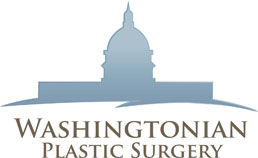Throughout their teens and 20s, many individuals become accustomed to full cheeks and high cheekbones.
However, aging and gravity can lead to skin laxity and volume loss, especially in the mid-face. As a result, the cheeks begin to fall and become flatter, causing jowls and a hollow appearance.
To lift the cheeks and regain a youthful fullness, many patients are electing to undergo cheek augmentation.
What Is Cheek Augmentation?
A cheek augmentation can be performed by a plastic surgeon to restore volume and support to the cheeks.
This can be achieved with both surgical and non-surgical interventions.
Non-Surgical Cheek Augmentation
Depending on the degree of rejuvenation desired, patients may elect a non-surgical approach to cheek augmentations.
A variety of temporary dermal fillers, such as Restylane and Juvederm, or longer-lasting fillers, such as Sculptra, can be used to lift cheeks and enhance the mid-face area. Based on the product used, results can last between six months–two years.
Additionally, plastic surgeons can harvest and transfer fat from the patient’s body to his/her cheeks for augmentation that lasts several years.
Surgical Procedure
A surgical cheek augmentation may be performed under local or general anesthesia. The surgeon will often order a facial x-ray pre-operatively to rule out any bone abnormalities or underlying medication conditions.
During the procedure, an incision is made in the patient’s mouth and a pocket is created between the cheekbone and facial muscles. A sizer implant is then used to determine which size and shape of cheek implant provides the best aesthetic improvement.
The plastic surgeon will choose between a smooth synthetic or textured polyethylene permanent cheek implant. A titanium screw is often used to secure this implant.
Recovery
Patients will be prescribed prophylactic anti-biotics after surgery to reduce risk of infection. They may also be placed in a facial compression garment to reduce swelling.
Plastic surgeons recommend icing the area on and off for 24 hours after surgery, eating soft foods, and not smoking.
Additionally, post-operative bruising, swelling, numbness, and tenderness in the cheeks will resolve gradually and may take up to two-to-three months to fully subside.
If you would like additional information about surgical and non-surgical cheek augmentation, please call Washingtonian Plastic Surgery today to schedule an appointment.



